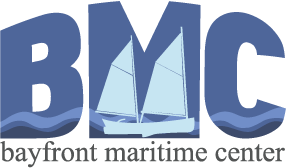A cubic foot of solid steel weighs 490 pounds. The same volume of lead tips the scales at 707. Depleted uranium? Eleven eighty-six. Roofing pitch? Sixty. The fabulous void filling “ballast steel” we discovered? Three thirty. We know all this at Team Porcupine because all these things are sealed in the now
completed and installed ballast keel. Why all these different things, you ask? Because the keel was a puzzle, and each of these materials was a piece. Ok, not the depleted uranium, but I wanted to make sure you were paying attention.
With a calculated weight based on every cubic inch of the forward chambers being filled with solid steel, the keel was supposed to weigh 7800 pounds, finished. But our donated or deeply discounted materials were a mixture of plate and round bar steel, leaving plenty of holes. We knew we’d have to add something heavier, especially up forward, and Executive Director Rich Eisenberg scrounged up a few hundred
pounds of lead pigs from his garage. But there was a lot more void space than we had lead to fill. Enter the magic of “ballast steel.”
We were tipped off to this incredible substance by board member Anne Sinopoli, a Material Planner at GE Erie, where they use ballast steelto properly weight railway cars. This collection of tiny punched out geometric shapes from a 1/4” sheet of stainless steel is essentially “swarf”—fine chips or filings produced by a machining operation. Collected together, it has the texture and shine of boxed treasure, and it made us irrationally happy to use. Team Porcupine got a 1000 pound barrel as a donation from Liberty Iron, and gleefully brushed it across the plates and bars, tapping the side of the keel to knock the tiny pieces down into every void.
With the lighter stern chambers filled with melted pitch, our volunteer Jerome Bien welded the lid in place, and the keel came in at exactly—exactly—the design weight of 7800. Now it’s secured to the hull, netting Porcupine an extra foot of lateral plane, the ballast she’ll need to carry her rig, and the very first of the dozens of US Coast Guard Approval stamps she’ll receive.
May the Swarf be with you,
Captain Jamie Trost and Team Porcupine




Nice!
Swarf ’em if you’ve got ’em.
Hi Jamie. Back in town. Want to visit porcupine. Procedures unknown. Any advice appreciated. Going to visit bmc 9/8/15 for further info in morning. Sorry for cancellation Sunday. Called bmc left message hope you rec’d it. Had to return Mercer earlier than expected. Dan.